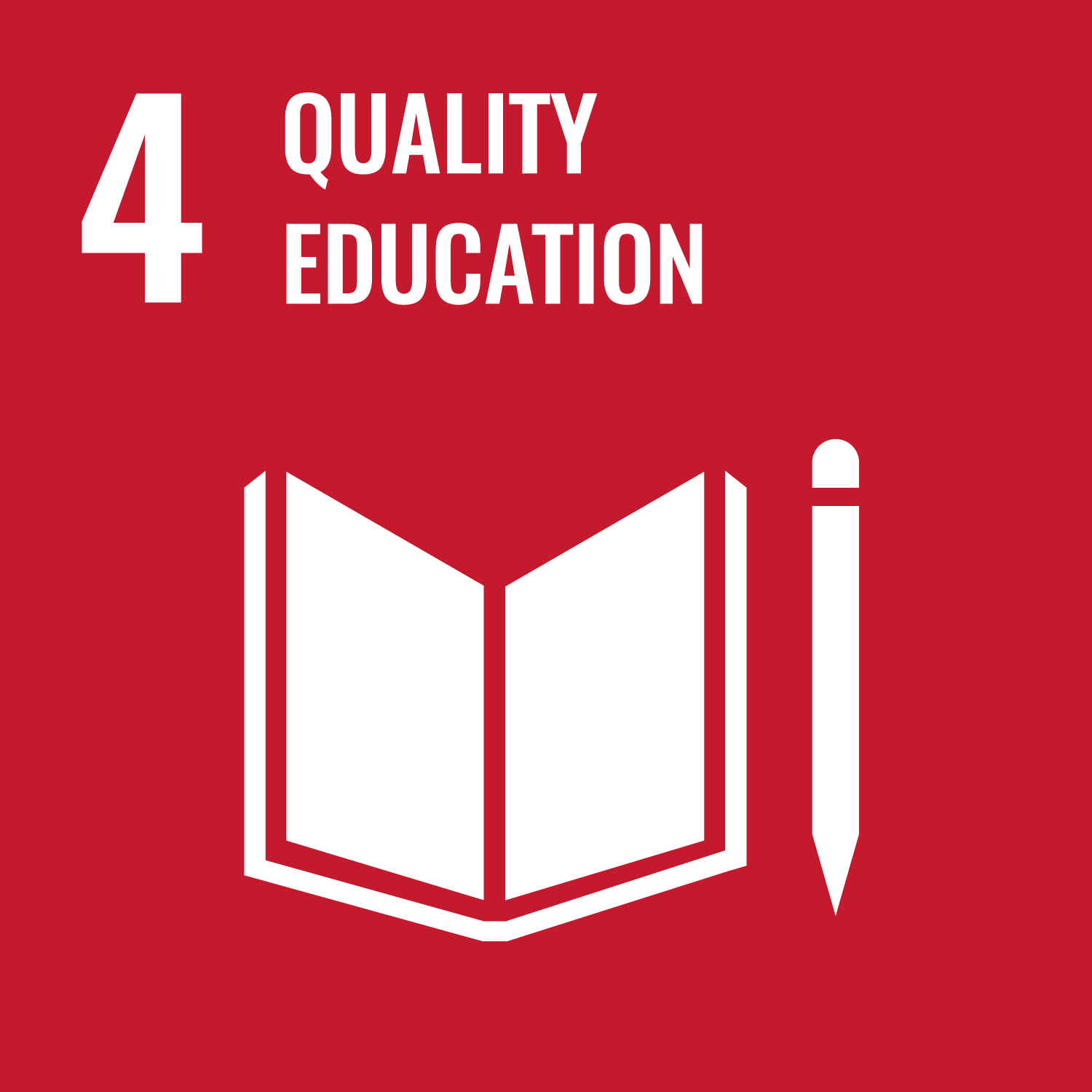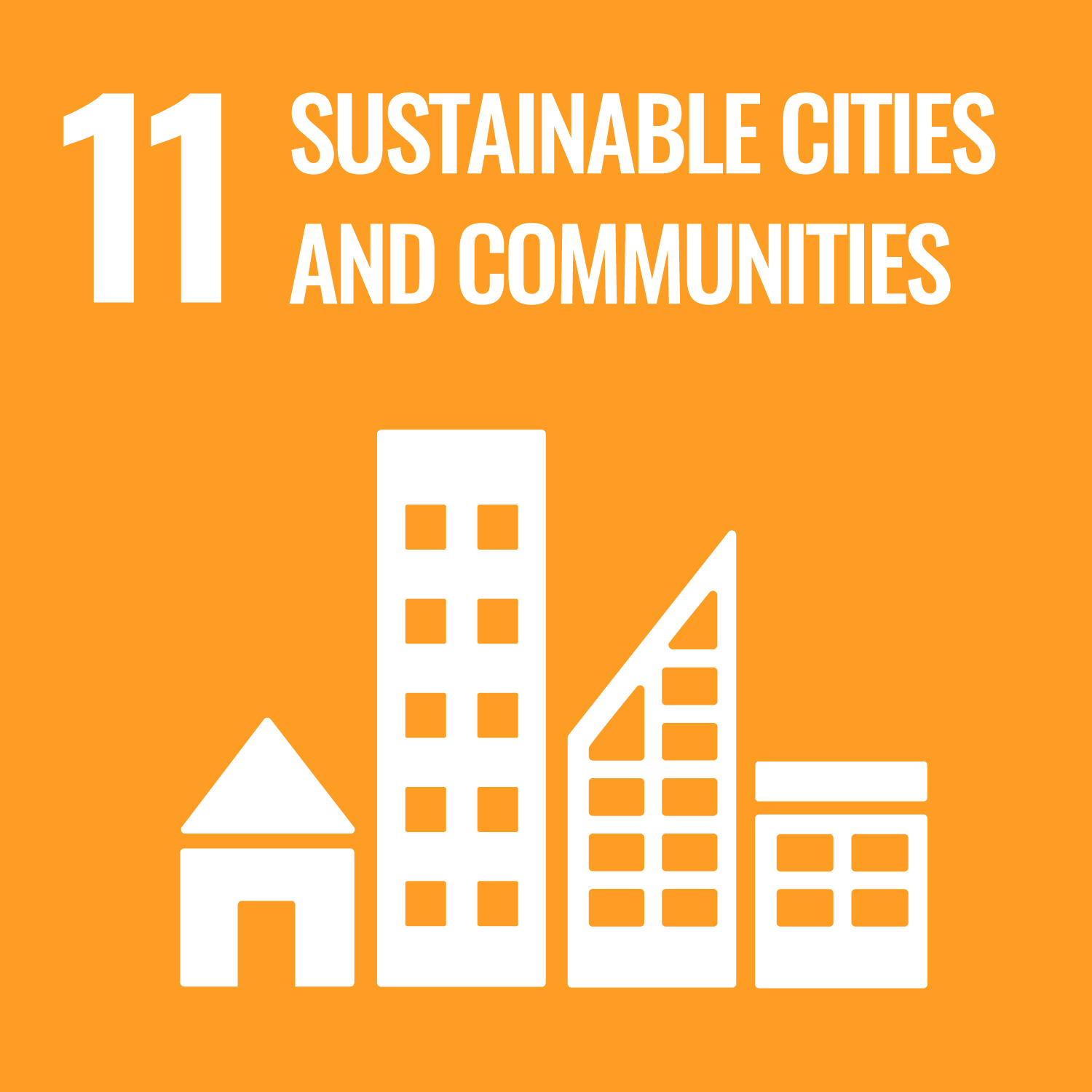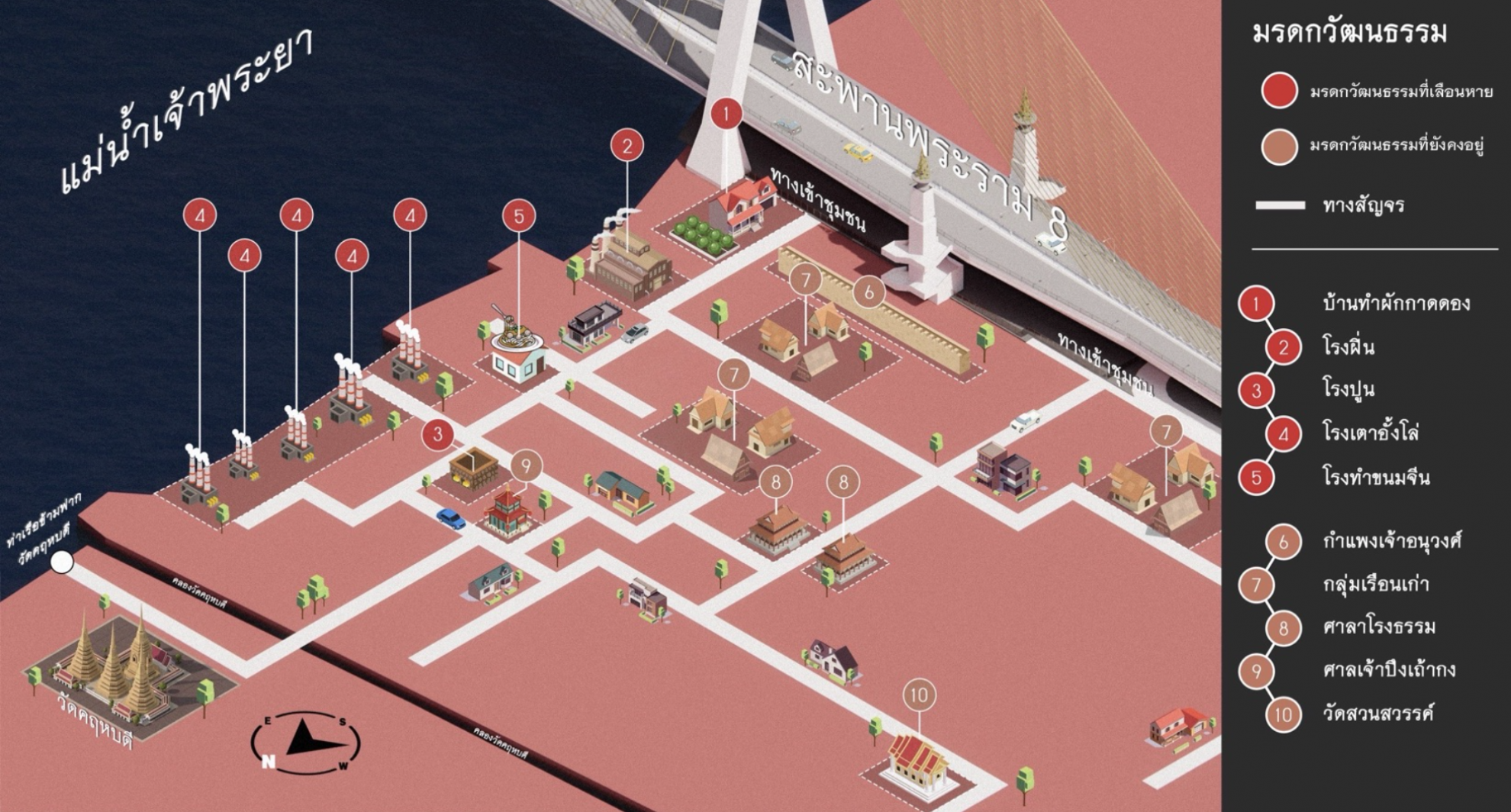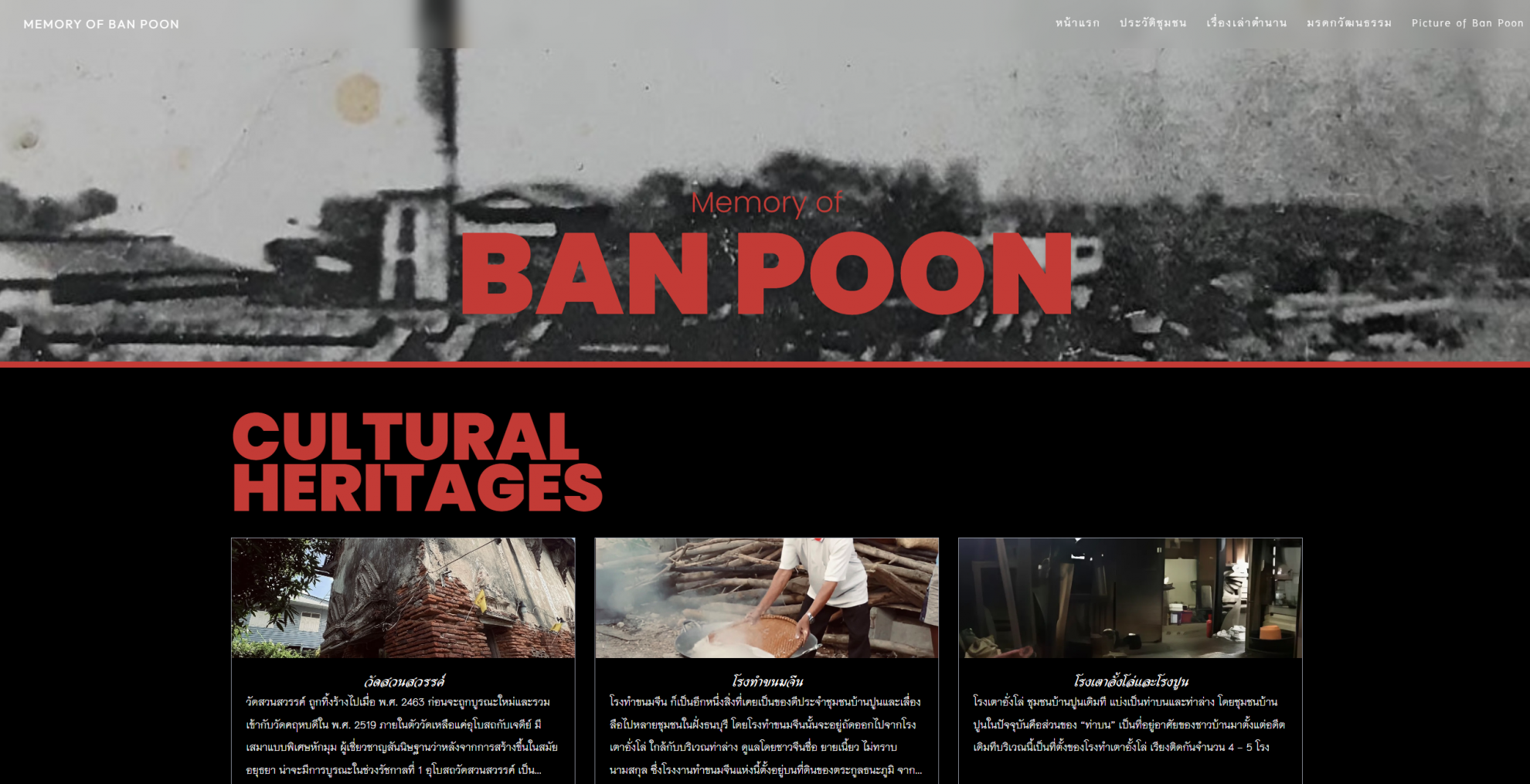





| Target | Indicator | Result |
|---|---|---|

SDG 4
QUALITY EDUCATION
|
||

SDG 11
SUSTAINABLE CITIES AND COMMUNITIES
|
||
The Memory of Ban Poon project was initiated by the Arts and Cultural Management Innovation Program, Faculty of Fine Arts, Srinakharinwirot University, which recognized that Ban Poon community in Bang Phlat District, Bangkok, is an ancient community located along the Chao Phraya River that clearly reflects the economic, social, and cultural transformations of Bangkok. This community derives its name from the red lime production that was once established in the area. Although the traditional knowledge of red lime production is no longer practiced within the community today, the community still retains the name "Ban Poon" (Lime House) as a reminder of its historical and cultural foundations.
However, the important knowledge and cultural heritage of this community are facing the risk of being lost over time and due to social changes. Therefore, the project was undertaken to develop a website to record, preserve, and disseminate knowledge about the community's history and development, legends, biographies of important figures, and both tangible and intangible cultural heritage of Ban Poon community. Additionally, interpretive signs and cultural maps of the community were designed to disseminate knowledge and promote cultural tourism in the community.
Thus, this project serves to create connections between the past and present, while also acting as a bridge between older generations who possess experience and memories and younger generations who wish to learn. This helps facilitate the transmission of knowledge and the preservation of cultural heritage for future generations.
Community-Level Impact: Community members become aware of the value and importance of cultural heritage and participate in the conservation, transmission, and dissemination of their community's cultural heritage to ensure its sustainable preservation.

